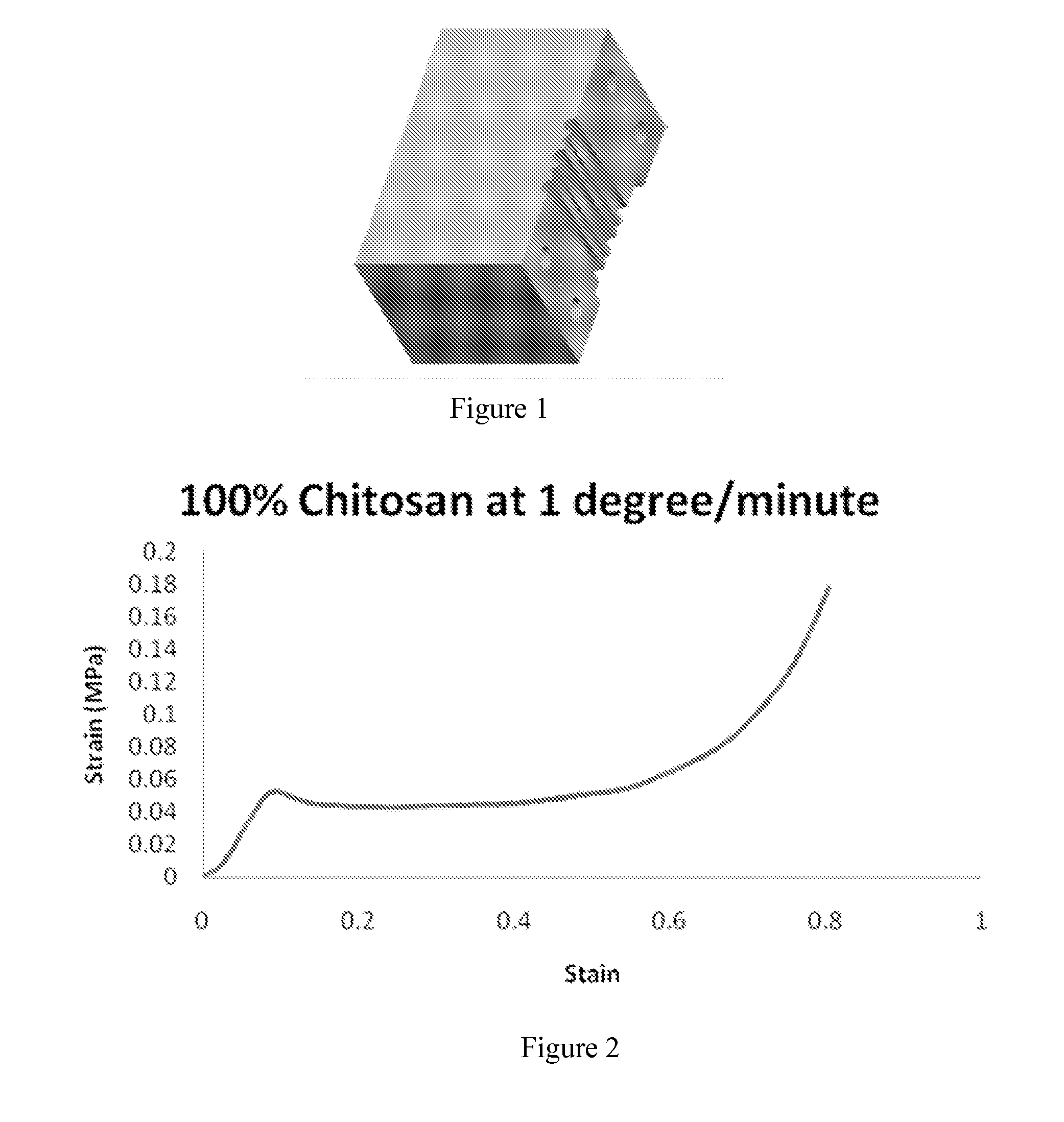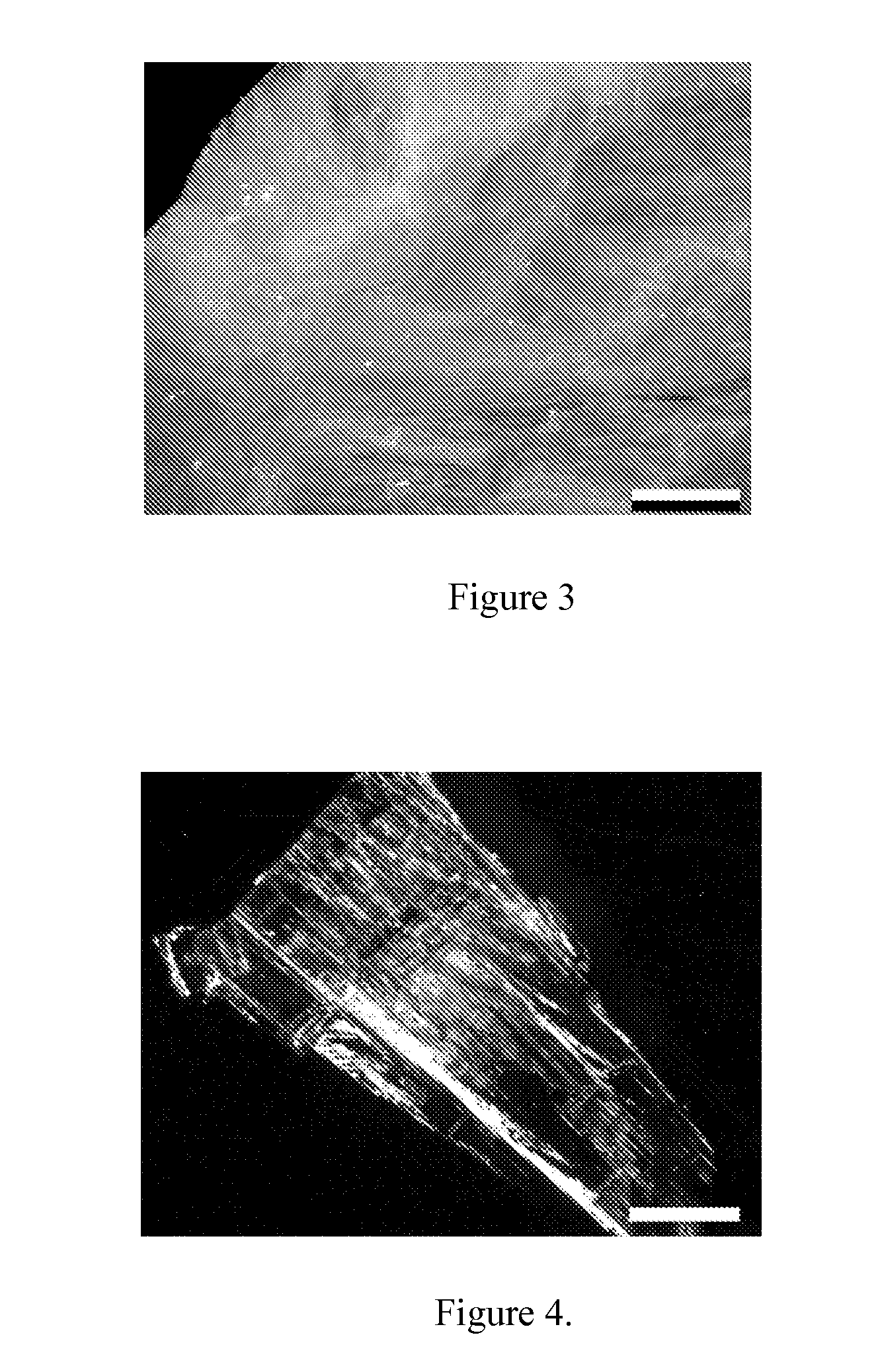Porous polymer scaffolds for neural tissue engineering and methods of producing the same
a polymer scaffold and neural tissue technology, applied in the field of biomedical implants, can solve the problems of hydrogel isotropic nature, model cannot predict changes, no scaffold has yielded complete functional recovery, etc., and achieve the effect of promoting axon outgrowth
- Summary
- Abstract
- Description
- Claims
- Application Information
AI Technical Summary
Benefits of technology
Problems solved by technology
Method used
Image
Examples
experimental examples
[0145]The invention is now described with reference to the following Examples. These Examples are provided for the purpose of illustration only and the invention should in no way be construed as being limited to these Examples, but rather should be construed to encompass any and all variations which become evident as a result of the teaching provided herein.
[0146]Without further description, it is believed that one of ordinary skill in the art can, using the preceding description and the following illustrative examples, make and utilize the present invention and practice the claimed methods. The following working examples therefore, specifically point out the preferred embodiments of the present invention, and are not to be construed as limiting in any way the remainder of the disclosure.
[0147]The following methods and materials were used in the experimental examples presented herein.
Polymer Preparation
[0148]Varying combinations of chitosan and gelatin, each dissolved in 1% (v / v) ac...
example 1
Generation of Chitosan Scaffolds
[0165]Demonstrated herein is an analysis of how the freezing rate, from 0.1° C. / m to 10° C. / m, affects the mechanical properties of the resultant chitosan scaffolds. Scaffolds were mechanically evaluated in both dry (ambient air) and wet (soaked in PBS) conditions. FIGS. 30A and 30B depict how the modulus and plateau strength (both MPa) vary according to the freezing rate in dry conditions. For each freezing rate, 3 layers were tested; the middle-height from the sample's bottom of the three layers is given in Table 1.
[0166]
TABLE 1Height (mm) from the bottom of the sample tothe bottom, middle, and top of each layer.LayerBottom of LayerMiddle of LayerTop of LayerTop25.3327.8330.33Middle14.8317.3319.83Bottom4.336.839.33Three layers were mechanically tested from each sample.
[0167]From FIGS. 7A and 7B, one can clearly see the change in values from within each sample; the bottom layer has a consistently higher modulus and plateau, while the top layer perfor...
example 2
Effects of Scaffolds on Neurite Growth
[0185]Having elucidated the structure-property correlations within the samples, and showing that the ridges serve to strengthen the elastic buckling-dominated architecture, the next logical step was to determine the ridge's effect on neurite outgrowth. SEM images of dissociated neurons cultured on the scaffolds (FIGS. 20A through 21B) show the soma (FIG. 20B) nestled between two ridges; neurites extended from the soma linearly, and stay within their respective grooves. One or two neurites were seen to jump from groove to groove, but predominately the neurites were guided by the ridges. FIGS. 21A and 21B show the same neurite growing up onto and then off of the same ridge. FIGS. 20A through 21B are in direct contrast to the controls, where both DRGs (FIG. 22A) and dissociated neurons (22B) were cultured on laminin-coated glass coverslides. Neurites were seen to extend in twisting, random directions from the soma; this was further corroborated by ...
PUM
 Login to View More
Login to View More Abstract
Description
Claims
Application Information
 Login to View More
Login to View More - R&D
- Intellectual Property
- Life Sciences
- Materials
- Tech Scout
- Unparalleled Data Quality
- Higher Quality Content
- 60% Fewer Hallucinations
Browse by: Latest US Patents, China's latest patents, Technical Efficacy Thesaurus, Application Domain, Technology Topic, Popular Technical Reports.
© 2025 PatSnap. All rights reserved.Legal|Privacy policy|Modern Slavery Act Transparency Statement|Sitemap|About US| Contact US: help@patsnap.com



